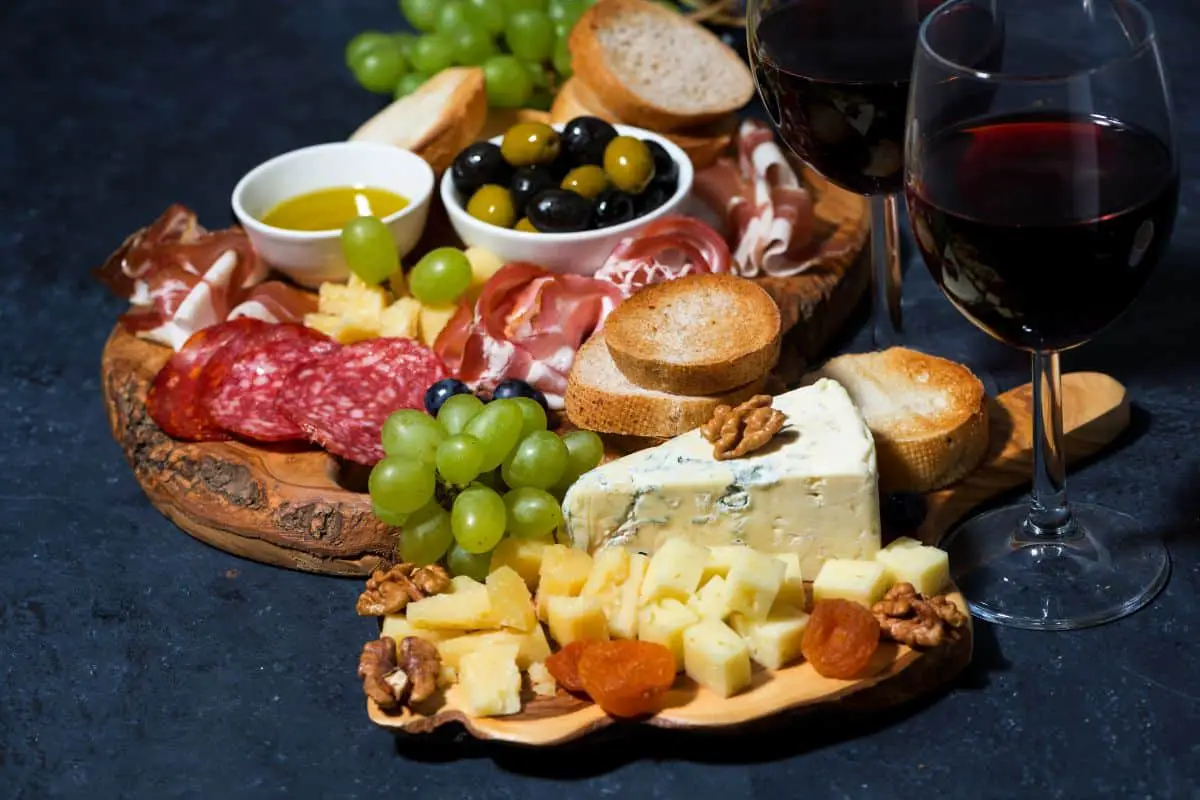There are many different categories of wine on the market, all of which offer different flavor profiles, alcohol content, and uses.
Table wine in particular is a category that you might not come across often as it is more of an old-fashioned term. However, in a restaurant setting, it may still crop up from time to time.
If you want to know how to spot a good table wine, you’re in the right place. In this article, we will look at all things table wine so you can feel confident next time you are faced with this outdated, ambiguous term.

What Is Table Wine?
The most widely accepted definition of table wine is that it is a relatively inexpensive wine that is enjoyed alongside a meal.
However, this is a vague definition that still leaves a lot of room for variation and interpretation, especially considering that there are many factors that contribute to the price of wine including the types of grapes, brand, and process.
It is also pretty abstract, after all, one man’s cheap wine is another man’s high-end wine.
It is also possible to enjoy any type of wine with a meal, with the most important factor being the pairing of the flavor profile of the wine with the contents of the meal.
So does “table wine” actually still exist? And where did the term come from if there is no clear definition or classification for this type of wine?
A common opinion among wine lovers is that the term “table wine” stems from a time when there were strict wine rules that people followed, however, now that wine is so accessible, these rules no longer exist and people enjoy the beverage on their own terms,
Table Wine In The US
In the US, if you come across the term “table wine” it is most commonly referring to wine that is non-sparkling, unfortified, dry, and contains an ABV of 14% or less.
It is relatively inexpensive, easy to drink, and accompanies a range of meals adequately. Nice and simple.
Any wine that is going to be popular with the majority of your guests will be a good table wine.
The most popular example of common table wine in the US is Pinot Grigio due to its light, crisp, fruity flavor and ability to be paired with a wide variety of dishes.
Table Wine In Europe
In Europe however, things become a little more complicated. Originally, the term “table wine” referred to a legal category of wine that met a set of minimum standards in the production process.
Within EU guidelines, all wine was considered to be either “table wine” or “Quality Wine Produced in a Specified Region”.
All this means is that table wine was of a lower quality, and everything else was protected by geographical regulations and was generally of a higher quality.
While the term “table wine” has officially been eliminated from the wine industry, it is still used by many European wine producers and will still be featured on the labels of older bottles of wine that are still circulating.
Difference Between Table Wine And Dessert Wine
Whereas a table wine must contain an ABV of 14% or less to be considered a table wine, dessert wine must contain more than a 14% ABV to be considered a dessert wine.
A dessert wine will almost always be significantly sweeter than other types of wine which lends itself perfectly to a pairing with sweet treats that are typical of desserts.

Difference Between Table Wine And Sparkling Wine
The main difference between table wine and sparkling wine is the presence or absence of bubbles.
Even though sparkling wine often contains an ABV of around 9-10% which would make it eligible for table wine status it is the characteristic bubbles in sparkling wine that exclude it from this category.
By definition, a table wine does not contain bubbles, therefore, any wine that does contain bubbles should not be sold as a table wine.
Difference Between Table Wine And Cooking Wine
One of the main differences between table wine and cooking wine is the quality of the drink. As a general rule, a wine that is used in cooking is of a lower quality than that of a wine that is produced with the intention of direct consumption.
The flavors in cooking wine are less potent and therefore make a less than enjoyable drink, but add a depth of flavor to a dish (See also: Is Marsala Wine Red Or White?). A regular or table wine contains much more potent flavors and is of a finer classification.
What To Look For In A Table Wine
One of the most important things to look for when choosing a table wine is the lack of a specified origin, especially in regard to European wines.
If a European wine has a specific country of origin, it is not a table wine and will likely feature a higher ABV level than average table wine.
Do not think that this means that the wine you are purchasing is of a lower quality.
It is possible for a table wine to be made by a pioneering producer that has access to incredible tasting grapes from a region that has not yet been classified into a geographical wine region.
If you are unsure as to which wines on the shelf will be the best quality, asking a staff member in the liquor store is always a good idea.
Price can also be a rough indicator of the quality of table wine, although no table wine should be considered expensive depending on your budget.
Final Thoughts
Table wine is a somewhat outdated, obsolete term when it comes to the purchasing of wine. Regardless, the wines that once fell into this category are still available and can be purchased inexpensively.
By looking at the ABV, characteristics, and region or lack thereof, you can easily purchase a great-tasting table wine for your next dinner party.
- How to Learn Wine Tasting: Essentials for Beginners - March 10, 2024
- How to Learn to Like Wine: Cultivating an Appreciation for the Vintner’s Art - March 10, 2024
- Thanksgiving Sangria: A Flavorful Twist to Your Holiday Table - August 27, 2023








